If you plan on buying a new bed soon, you might be curious to know who has the best mattresses, and which ones to avoid. In this guide, we’ll be comparing mattress reviews on 2020’s top-rated beds. We also contrast them with the ones that don’t fare so well, in order to highlight how the different brands stack up.
First and foremost, it’s important to understand why mattress reviews prove a very powerful tool when it comes to making big buying decisions. Although comfort is unique, people leave mattress reviews to share the experiences with companies and retailers, their likes and dislikes, and potential problems you might want to be aware of before committing to a purchase. This insight tells you things salespeople or a trip to the local store can’t, and can help you determine if things like the firmness level or durability is on par with people’s expectations.
Armed with information from mattress reviews and the essentials of the industry, you’ll be equipped to make a smart decision that’ll have you resting easy for years to come.
The Best Reviewed Mattresses of 2023:
30-Second Summary
Editors’ Recommendation:
Amerisleep mattresses offer the perfect balance of softness and support, so don’t feel stuck. They also offer customers a 100-night sleep trial and a 20-year warranty. (It’s no wonder they have a 4.7 star average.)
Runner-Up:
Zoma designs mattresses to boost recover and aid in deeper sleep. With gel infusions and zoned support technologies, these beds can upgrade your night’s sleep. What’s even better, though, is that they cost less than $1000 for queen sizes!
Honorable Mention:
Vaya is a budget-friendly mattress designed to suit all sleep styles and body types. You shouldn’t have to dish out thousands on a new bed, and Vaya believes in offering a comfortable sleep solution everybody can afford.
The Best Reviewed Mattresses of 2023
Editors’ Choice – Memory Foam Mattress Brand
Amerisleep.com
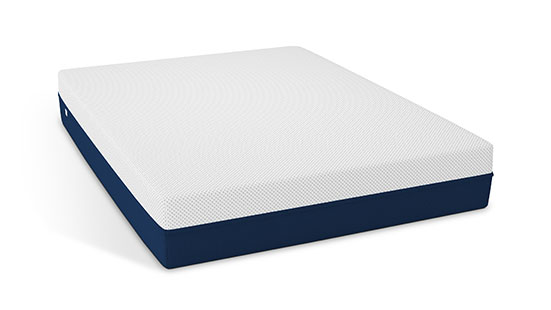
- Plant-based memory foam that is eco-friendly
- Soft, breathable cover
- Low-VOC mattress
- 100-night sleep trial
- 20-year warranty
Click to read our full review of Amerisleep down below.
Editors’ Choice – Latex Mattress Brand
Astrabeds.com
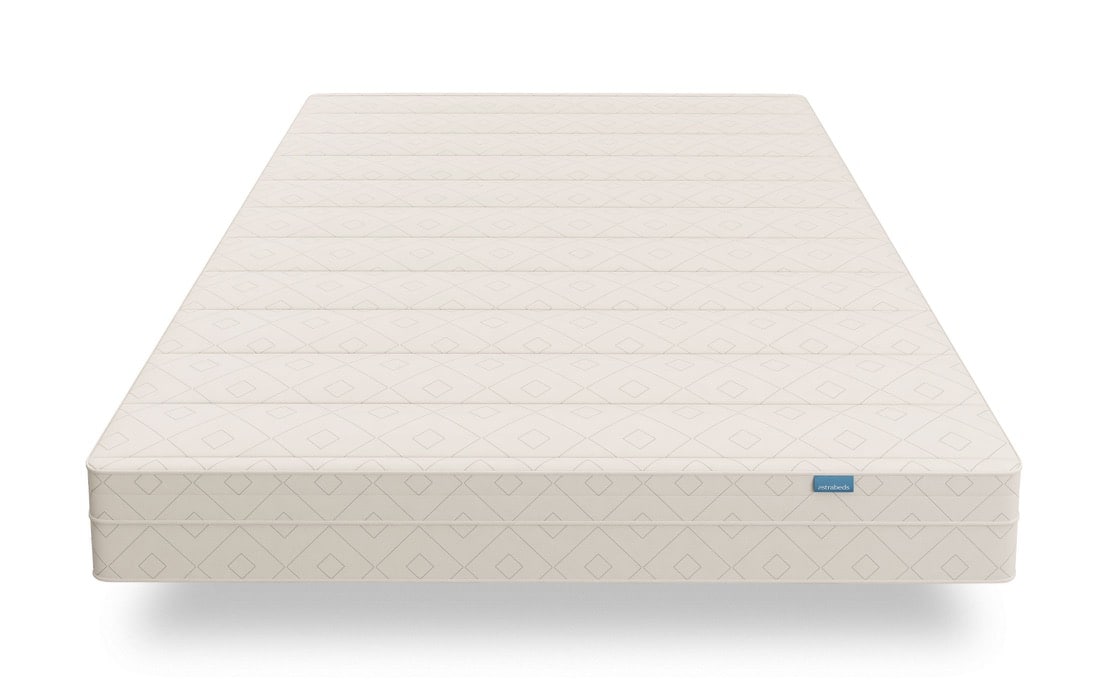
- 100% certified organic latex
- Certified organic cotton cover
- Organic wool fire barrier
- Low-VOC mattress
- 90-night sleep trial
- 25-year warranty
Skip down to our full review of Astrabeds here
Editors’ Choice – Innerspring Mattress Brand
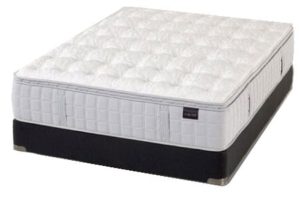
Aireloom / Kluft
- Lyocell fabric cover
- Pocketed coils
- 20 to 25-year warranty
Read more about innerspring mattresses down below
The Best Type of Mattress: Survey Says…
There is no single best mattress or type for every single person; each of us has individual needs and preferences. But, a look at trends in consumer satisfaction and performance can offer some helpful insight into which type of bed might offer you the best sleep.
For many decades, the term “mattress” has been synonymous with the innerspring coil bed, topped with various layers of fiber batting and foam. Today, with the boom in specialty brands and online retailers however, shoppers have quite a few choices to make when buying a bed.
The most common types on the market currently are innersprings, memory foam, and latex foam. Air and water are also available through limited retailers, but they represent a fairly small share of the market. In this guide, we’ll be focusing on spring and foam beds.
Below are how these types of mattresses compare, on average, based on data from Sleep Like The Dead. This represents each category as a whole, but individual brands can vary quite a bit from the “norm”, which is important to keep in mind as well.
Comparison of Top Mattress Types
| Innersprings | Memory Foam | Latex | |
|---|---|---|---|
| Average Owner Satisfaction | 64% | 80% | 79% |
| Average Price | $950 | $1,370 | $1,900 |
| Support | Fair-Good | Good | Good-Excellent |
| Odor | Good | Poor-Fair | Good |
| Heat | Fair-Good | Fair | Fair-Good |
| Motion Transfer | Poor-Fair | Excellent | Excellent |
| Durability | Poor-Fair | Good | Good |
| Expected Lifespan, w/ Regular Use | about 6 years | about 7 years | about 8 years |
| Warranty Coverage | Fair | Good | Good-Excellent |
| Availability | Excellent | Good | Fair |
Data collected from SleepLikeTheDead.com • Ratings Key = Excellent > Good > Fair > Poor
While innerspring beds remain the most popular mattress type in terms of sales, consumers overall report higher satisfaction with memory foam and latex types. Both foam categories continue to grow rapidly as well, with increasing availability and awareness.
Owner Satisfaction of Innerspring, Memory Foam & Latex
[amcharts id=”owner-sat-mattress-types”]
Potential reasons for this large gap in satisfaction could include durability and long-term comfort. Higher-quality foam mattresses tend to show less sagging and provide comfort longer than their average spring counterparts.
Many spring beds use fairly low quality foams and fiber layers. These tend to compress quickly and leave indentations, reducing the bed’s ability to cushion against pressure points. Over time, this can contribute to pain and reduced comfort.
Good-quality memory foam and latex both excel at contouring to the sleeper as well which supports natural posture, whereas certain types of spring beds can impede alignment. For example, most mattress reviews indicate that people experience less back pain on memory foam and latex compared to spring beds.
Memory Foam Mattresses
Far from a novelty, memory foam mattresses are becoming quite popular with people around the world. While not as widely available as the standard spring bed, many showrooms and online retailers offer brands of these beds, which can range from inexpensive to luxury in pricing.
Innerspring beds are the main competitor to memory foam beds due mainly to their wide availability and consumer familiarity. Among 164 consumers included in our research who have owned both types and stated their preference, memory foam is often preferred.”
– Based on research from SleepLikeTheDead.com, an independent mattress research organization.
Top Memory Foam Mattress Brands
| Brand | Owner Satisfaction | Price Range (Queen) | Notes | Warranty |
|---|---|---|---|---|
| Amerisleep | 93% | $1099 - $1999 | 10”-14” profile 2”-4” memory foam Plant-based Medium density | 20 year |
| Novosbed | 82% | $1099 | 11"-13" profile 4-5" memory foam Traditional and gel Medium density | 15 year |
Data collected from SleepLikeTheDead.com and retailer websites.
Memory foam is the top-rated bed type based on mattress reviews, but not all beds in this category are created equal. There are a couple things to be aware of when comparing this type of bed, including the type of foam, foam density, and the makeup of the layers.
Foam Type
The type of memory foam refers to the methods used to make it and its characteristics. The key types you’ll find when shopping include:
- Traditional – This is the standard, temperature sensitive memory foam, made of polyurethane and other synthetic materials. The easiest to find generally most affordable, but also most likely to have stronger odors and and heat retention. This type of foam will react slowly after being compressed.
- Gel – Traditional memory foam, but with gel beads or gel liquid mixed in. Gel foams typically have slightly lower odor and heat complaints, but may cost more. Slow to moderate reaction time to movements. Consumer Reports suggests that gel foams offer no noticeable difference.
- Plant-Based – Plant-based memory foam mattresses use a portion of naturally-derived ingredients in place of synthetics, and may have a greener overall focus. Plant-based foams generally have lower complaints of heat and odor, and people who dislike the stuck or slow response sensation of traditional foams may find the faster, temperature-neutral nature of plant foams preferable.
Traditional, gel, and plant based. Do you know the difference?
Foam Density
Density is a measure of the weight of one cubic foot of foam. Denser foams have less air. Density is not closely tied with firmness, though very dense foams can feel stiffer initially, especially temperature sensitive types. Medium density foams generally have the highest average satisfaction, but individual preferences can vary.
- Low Density – Memory foams under 3.5 lbs. Low density foams are more affordable and have lower complaints of off-gassing and heat. But, they may not provide adequate support or pressure point relief especially for heavier individuals, and may wear faster.
- Medium Density – Memory foam between 3.5 and 5.0 lbs. Average odor and heat complaints, good support and pressure point relief for most sleepers, average to good durability.
- High Density – Memory foams over 5.0 lbs. High density foams have the highest heat and odor complaints (due to a higher concentration of polymers and ingredients) and they are most expensive. However, high density foams are also associated with better pressure point relief. Since very high densities can feel stiff and create a “stuck sensation”, they are ideally used as a supplement to other layers and not the main comfort layer.
Layer Construction
All memory foam beds are composed of at least two layers — the memory foam layer and the base or core foam layer. Some brands may add multiple layers of foams and other materials as well. When comparing, you want to know the type of material and quality of each layer. For example, low density base foam (under 1.4 lbs) may not provide adequate support and can break down much quicker than high density polyurethane foam.
Best Memory Foam Mattress Brands
While most people are familiar with the large, big box mattress retailers, new online mattress companies are beginning to move into the mainstream. These companies can offer a high quality bed at a better value because of their lack of retail expenses as well as other high markups. Our top mattress brand reflects this shift in the industry to more affordable, and often higher-quality, options.
Top Rated Mattress Brand: Amerisleep
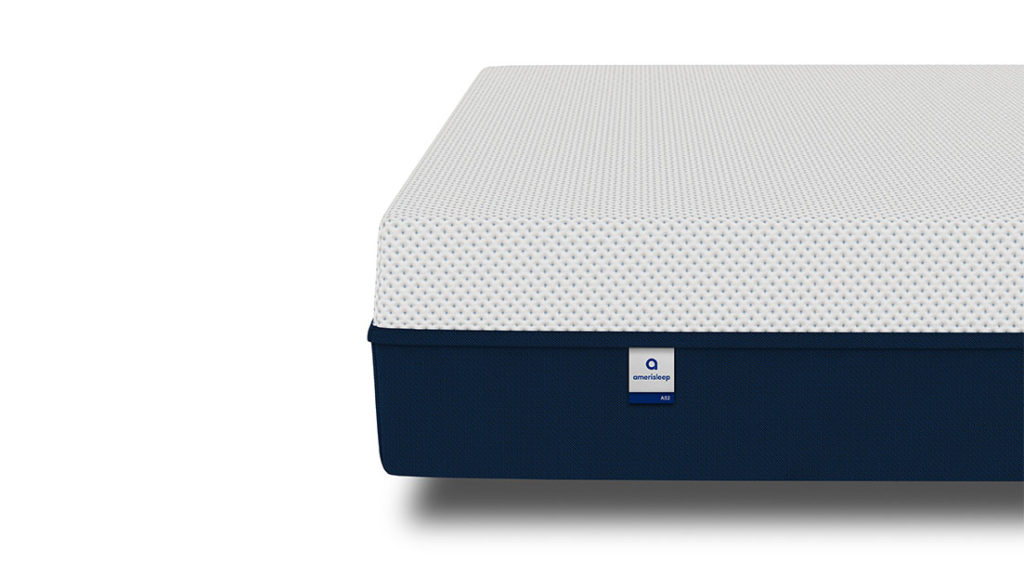
Amerisleep’s plant-based memory foam and hybrid mattresses top this year’s ratings, with satisfaction scores over 90% from reviews. They offer eight models, ranging from firm to plush and in different thicknesses, to tailor to all sleeping styles and body types. Plus, because their beds feature plant-based foam, Amerisleep’s mattresses are an eco-friendly option. Every mattress has a soft, breathable mattress cover designed to keep air flowing throughout the mattress, so you’ll always sleep cool. With the inclusion of eco-friendly Bio-Pur® and HIVE® zoned support, Amerisleep proves to be the most technologically advanced brand that we’ve reviewed.
Runner-Up: Zoma Sleep
Zoma Sleep offers memory foam and hybrid mattresses to boost recovery and help you make the most of your time spent sleeping. Whether you’re a professional athlete or a backyard baseball star, the Zoma Mattress can help you recover faster so you can wake up feeling your best every day. Forget sore muscles and tired mornings, Zoma’s gel memory foams and zoned technologies offer a truly upgraded sleep experience.
Honorable Mention: Vaya Sleep
Mattresses are an investment, but not everybody can afford to spend nearly a grand on a new bed—that’s where Vaya Sleep comes in. The founders of Vaya Sleep believe everybody should be able to afford a comfortable bed, so they sought out to make a universally-comfortable mattress that not only harnesses the benefits of both memory foam and latex but is also budget-friendly. Vaya Sleep’s contouring yet lifting Vaya Mattress is breathable and comfy for most sleep styles to help anybody achieve a healthy night’s rest.
Want to know more? Read our guide to the best memory foam mattresses
Worst-Rated Memory Foam Mattresses of 2023
The brands with lowest ratings this year (not all featured in the chart above) include some of the most expensive brands on the market. While they still earn higher ratings than the average innerspring bed, consumers report issues with durability, warranties, heat retention and other things. Another thing people take issue with is value, as many of these lines use similar quality materials to their more affordable counterparts. These also include lower-priced options which tend to use less durable materials more susceptible to impressions, odors, and heat.
- Dream Foam
- IKEA
- Serta iComfort
Latex Foam Mattresses
Latex mattresses are becoming popular, particularly with people seeking healthier or greener alternatives. Those who prefer a bouncier or more resilient surface than memory foam may also prefer latex foam. In terms of mattress reviews, latex is usually very similar to memory foam, also outperforming innersprings.
Although not as widely available in stores as other mattress types, plenty of online retailers sell latex and even organic latex mattresses nationwide. These beds tend be slightly more expensive than memory foam, particularly for all-natural latex as the materials are more expensive to produce and the certifications many manufacturers obtain to show quality are also costly.
Which is best: Memory Foam or Latex?
When shopping for a latex mattress, the key things to consider are the type of latex, the layer construction, and the certifications.
Latex Type
Latex foam can be composed of natural latex derived from rubber trees or from synthetic styrene butadiene rubber derived from chemical components. More commonly, you’ll see latex made of a blend of natural and synthetic materials.
- All natural latex tends to rate better for comfort, durability and odor. It also offers a greener, eco-friendly option, important to many buyers.
- Synthetic and blended latex is cheaper, but owners report more odors and off gassing, and reduced durability.
- Latex foam is made using either the dunlop or talalay process. Dunlop is the more established process, while talalay adds a few steps for more uniformity. Talalay tends to cost more, but owners tend to rate both types similarly.
Layer Construction
A latex mattress should be composed of only latex foam – both the core and the comfort layers (unlike visco foam, which requires a support core of poly foam). Latex beds with poly foam cores tend to rate significantly lower. Shoppers concerned with chemicals or buying green should also look at the fire barrier and cover materials to ensure they are natural (wool fire barriers and cotton covers are most popular with these types of beds).
Based on our collected owner experience data, natural latex mattresses rate about 15-20% higher in overall satisfaction than blended latex or synthetic latex mattresses . . . In addition, natural latex appears to perform somewhat better than the blended and synthetic varieties in regard to longevity and resistance to compression / development of body impressions.”
– From research at SleepLikeTheDead.com, an independent mattress research organization.
Certifications
Another thing you will come across when shopping for this type of mattress is certifications, which are important for natural and organic lines. Any latex bed described as organic should have certificates of standards available from GOLS (Global Organic Latex Standard – the only standard for latex foam), GOTS (Global Organic Textile Standard), USDA, or Organic Content Standard certifying agencies. Oeko-Tex, Eco Institut and Greenguard are standards that test for off gassing and chemicals (but not organic content).
| Brand | Owner Satisfaction | Price Range (Queen) | Notes | Warranty |
|---|---|---|---|---|
| Astrabeds | 91% | $1799 - $2999 | 7”-13” profile Organic dunlop Organic wool and cotton Customizable | 25 year |
| Flobeds | 82% | $1779 - $2899 | 9”-12” profile Natural or blended talalay Optional organic cotton Customizable | 10 year |
| Foam Sweet Foam (Urban Green) | 82% | $1499 - $1999 | 10”-16” profile Natural talalay and/or organic dunlop Part organic cover Customizable | 30 year |
| Habitat Furnishings | 80% | $1149 - $1699 | 6”-9” profile Organic cotton Natural talalay & dunlop | 20 year |
| Savvy Rest | 81% | $2499 - $5499 | 7”-13” profile Organic cotton Natural talalay or organic dunlop Customizable | 20 year |
| Sleep EZ | 82% | $1395 - $2600 | 7”-13” profile Natural talalay or dunlop or talalay blend Optional organic cotton Customizable | 20 year |
Data collected from SleepLikeTheDead.com and retailer websites.
Best Latex Mattress Brands
The best latex mattresses in 2023 all earn ratings significantly above average, and the majority use all natural and organic materials with good return policies and warranties.
- Astrabeds
- Sleep EZ
- Flobeds
Best Latex Mattress: Astrabeds
Astrabeds earns strong reviews with certified organic latex, customizable layers (including split firmness for couples), and multiple models. Compared to other certified organic lines, Astrabeds also offers one of the best values, noted by reviewers. Sleep EZ also garners positive reviews for their mattresses based on comfort and green principles, but pricing can be comparatively high when not on sale and the website may be confusing for some. Flobeds is another top candidate, with natural and organic options as well as custom layers.
Worst-Rated Latex Mattresses of 2023
Two beds near the lower end of satisfaction scores and mattress reviews for latex are the Habitat Furnishings line, and the Savvy Rest collection. While both lines generally do well on comfort, Habitat reviewers mention potentially poor value and some durability issues. Reviews of Savvy Rest show some contention with pricing, which is significantly higher than other organic options for similar materials and guarantees.
- Habitat Furnishings
- Savvy Rest
Innerspring Mattresses
Innerspring beds remain the most commonly sold category, available at nearly any mattress showroom or department store. This category ranges from very cheap to high-end mattresses, primarily dominated by long-standing household names like Simmons and Serta. Recently, newer online entrants are making waves however.
When it comes to buying a spring bed, the key points of comparison include the coil type and comfort layers. In addition to coil type, there’s also coil count and gauge.
Coil Types
Four types of coil systems comprise the majority of spring beds on the market:
- Pocketed coils are becoming the most popular spring type, comprised of individual springs, wrapped in fabric. This type is seen as best for overall support and on limiting motion transfer. Most mid to high priced models currently use pocket coils.
- Bonnell coils are composed of hourglass coils, connected by wires. These are less expensive to manufacturer, and are most common on low to mid priced beds. Support can be good with bonnell systems, but durability is often an issue.
- Continuous coils are made with connected coils that work off of each other. Because the coils share weight, these systems can have good durability, however conformability and support can be an issue, as can motion transfer.
- Offset coils are flattened hourglass springs hinged together with wires. These systems tend to do well at support, fair at motion isolation, but average in terms in durability.
Coil Count
The coil count refers to the number of coils in the mattress. While very low coil counts (under 500) can mean poor support and longevity, super high coil counts don’t automatically make a bed better — so don’t feel the need to pay hundreds extra for a few more coils if the mattress seems like a good fit for you.
Coil Gauge
Coil gauge refers to the thickness of the metal wire in the coil. Lower numbers (like 13) mean a thicker coil, which typically feels firmer and may also be more durable. High numbers (like 15) feel springier/softer, but could wear faster.
The materials on top of the springs also prove important, as they need to provide lasting protection against painful pressure points and aid proper back support. Poly foam and polyester fiber are by far the most common. Thick layers of fiber can compress quickly, as can low quality foams. Memory foam and latex can last longer, but typically cost more. One solution is to purchase a bed with a quality coil system and minimal comfort layer, and then use a separate removable topper than can be replaced as it wears (rather than replacing the entire bed).
| Brand | Owner Satisfaction | Price Range (Queen Set) | Notes | Warranty |
|---|---|---|---|---|
| Aireloom / Kluft | 75% | $1600 - $20,000 (est) | 11”-16” profile Pocket or offset coils Wool, cotton, latex | 10-20 year |
| Denver Mattress | 63% | $319 - $1899 | 7.5”-14“ profile Pocket or offset coils Foam, fiber, memory foam, latex | 5-15 year |
| Duxiana | 74% | $4800 - $9180+ | 9”-12” profile Continuous coils Latex, cotton Replaceable parts | 20 year |
| IKEA | 62% | $199 - $999 (*not sets) | 7”-13.5” profile Pocket or bonnell coils Fiber, latex memory foam, foam | 20 year |
| King Koil | 65% | $599 - $2799 | 9”-16” profile Pocket or continuous coils Fiber, foam, memory foam, latex | 10-25 year |
| Kingsdown | 64% | Mid-High (varies) | 9”-17” profile Bonnell or pocket coils Fiber, memory foam, latex, cotton, wool | 10 year |
| Sealy | 65% | $399 - $2199 | 8.5”-15” profile Offset or pocket coils Fiber, foam, memory foam, gel | 10 year |
| Serta | 64% | $399 - $2999 | 9”-17” profile Pocket or continuous coils Fiber, foam, memory foam, gel foam | 10 year |
| Signature Sleep | 74% | $230 - $330 | 6”-13” profile Bonnell or pocket coils Fiber, foam, memory foam | 1 year |
| Simmons | 62% | $375 - $4300 (est) | 10”-17” profile Pocket or bonnell coils Fiber, foam, memory foam, gel, latex | 10 year |
| Stearns & Foster | 60% | $1499 - $3299 | 12”-17” profile Pocket coils Fiber, gel foams, memory foam, latex | 10 year |
Data collected from SleepLikeTheDead.com and retailer websites.
Best Innerspring Mattress Brands
Reviewers appear to rate the highest priced beds and the inexpensive, moderate quality mattresses the best, although they are designed for different purposes and lifespans. Two of the top-rated innerspring companies are also two of the most expensive options around, regardless of bed type, though some budget brands also hold up well to people’s expectations.
- Aireloom/Kluft
- Signature Sleep
- Duxiana
Kluft and Duxiana are luxury mattress brands that utilize higher quality materials like natural cotton and natural latex foam. Mattress reviews prove very strong compared to peers and these lines have good warranties, however average prices are several thousand dollars, which is not practical for the majority of shoppers. Signature Sleep offers inexpensive mattresses with budget quality and very little warranty, however they appear to exceed reviewers’ expectations for the price paid and can be good for short term or infrequent use.
Worst-Rated Innerspring Mattresses of 2023
Again, some of the biggest names are rating no better than average amongst consumers, despite lofty claims, reputations and not-cheap prices. Most brands have multiple collections spanning the entry level to luxury ranges, and for the most part, the lower-priced collections tend to rate significantly lower.
Innerspring beds overall have lower owner satisfaction than most other mattress types due mainly to below-average durability and longevity. They also tend to provide only fair long-term pain and pressure-point relief. Some models may produce noise.”
– Quote from SleepLikeTheDead.com, an independent mattress research organization.
- Simmons
- IKEA
- Serta Perfect Sleeper
Don’t get caught with a bad bed: Read Best Mattress Brands’ 10 Best & 10 Worst Mattresses of 2023
2020’s Top 10 Companies by Mattress Reviews
So what is the best mattress on the market? Based on our comparisons of third party mattress reviews and specification information, we’ve highlighted a few top entry level and luxury mattress brands that are currently exceeding consumer expectations. Personal preferences as to the best brand of mattress will vary, but these options offer a good starting point for research and comparisons.
Entry Level Brands
- Signature Sleep, innerspring beds from $150
Mid-Range Brands
- Amerisleep, plant-based memory foam mattresses from $749
- Simmons Beautyrest Recharge Hybrid collection, innerspring and foam beds from $999
Luxury Mattress Brands
- Flobeds, natural latex mattresses from $1779
- Astrabeds, organic latex mattresses from $1799
- Duxiana, high end and natural spring beds from $4800
Whichever type of bed you plan on buying, it pays to do your research, check mattress reviews, and compare a wide variety of options. As you can see, the best-known or priciest options often aren’t the best overall values. Online retailers also seem to be doing well, with fair pricing and return policies.
Let us know what you think of this year’s best mattresses, or how your shopping went in the comments below!
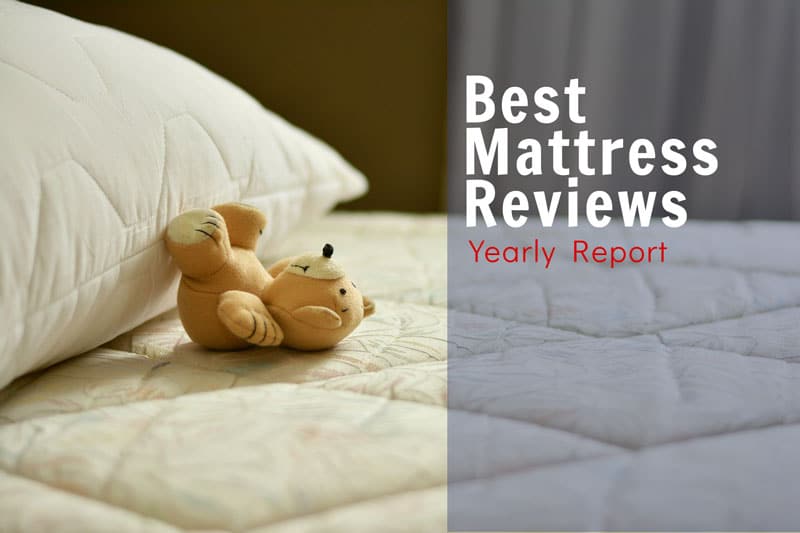
All of these reviews are informative but also very confusing. We are in search of the “mattress for the best price”, especially seeing that I have spine & back problems. How do you narrow all the info down to one mattress? Very scary
This doesn’t include anything about the air mattresses, like Select Comfort or Personal Comfort. How do they compare vs the ones here?
Don’t buy a Sterns and Foster. I bought one for my day bed. I’ve been using it for a temporary bed until I finish rehabbing my home. I wake up tired, with whole body aches.
Stay away from Simmons subpar quality. We have had our mattress for two years and it is already unusable. Although the mattress has a five year warranty the company refused to resolve the issue. So let me do a simple math for you: $2,000 king size mattress from Simmons replaced every two years is $8,000 in 8 years that you are supposed to replace your mattress. Save your hard earned money and spend a little bit more than $2,000 and go somewhere where you are valued as a customer and are going to get a top notch product.